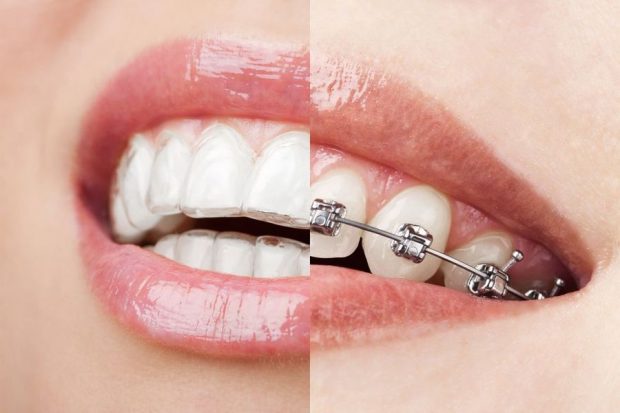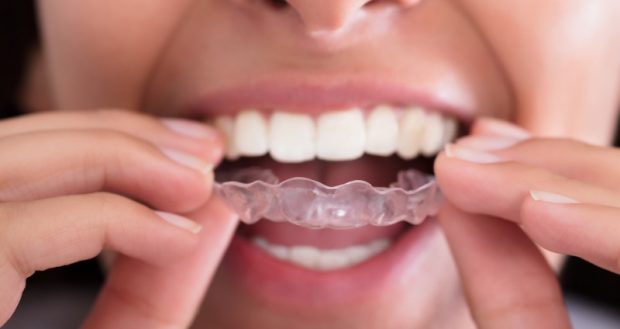Due to the enormous number of braces on the market, it is quite difficult to determine the best option for you. It is also highly difficult to figure out which option is going to solve your current orthodontic problems. Traditional braces are not the option that most dentists suggest nowadays. Removable braces, in the form of Invisalign aligners, are the replacement for traditional braces. The following sections of this article focus on answering the most common question people have about this type of braces.

What are Removable Braces?
In simple terms, removable braces are a piece of wire that is bent in a certain shape. It is considered the simplest of braces, being an archwire that is fitted to go on your teeth, with no brackets at all. They can assist in fixing minor issues and can also make slight adjustments to the bite. However, specialists say that they cannot rotate teeth and do not have the necessary force for more complex treatments.
The main advantage of removable braces is that they can be removed at any time and there is no need to wear them all the time, says this dentist in Fayetteville. The duration of time during which they have to be worn depends on the recommendations of your dentist. On average, patients wear them for about 16-22 hours per day. In the vast majority of cases, they are removed when it is time to eat or brush the teeth. This is normally done in order to avoid carries and make treatment cleaner. You might even consider dental solutions like dental implants shrewsbury.
What are the Differences Between Removable and Traditional Braces?
As was previously mentioned, traditional braces are made of metal wires and brackets that are held in place by a small door mechanism. Dentists bond them to the teeth, thus, making them, semi-permanent, until the point when your doctor removes them.
On the other side, removable braces are aligners that are produced from strong plastic, which resembles whitening trays. They are typically worn during the whole day except for moments when you eat or engage in oral hygiene routine.

Apart from that traditional braces involve some risks that aligners typically do not have. They are as follows:
• Enamel trauma: during the process of removing fixed braces, dentists use a special tool to click or pop the bracket off the tooth. This procedure can lead to enamel chipping and coming off. Additionally, a dentist may need to use a drill to cut off the remaining glue that can potentially damage the enamel.
• Enamel demineralization: the part of the tooth that has a fixed bracket glued can get demineralized, meaning that when the brackets are removed there will be a visible white square.
• Enamel wear: doctors say that braces attached to lower teeth can lead to edges of upper teeth chipping and wearing faster as they grind or bite on the brackets.
• Root resorption: if the brackets put too much pressure on the teeth, it makes teeth roots shorten slightly. This normally happens with any orthodontic treatment but more often with fixed braces when the pressure is much higher and localized.
• Nerve reactions: if the teeth move too fast, the teeth nerve can be under extreme pressure and possibly even die.
• Trauma: as you already know, traditional braces have sharp metal corners that can cut the lips and gums. This becomes especially dangerous during sports activities where there is a high chance of collisions. Therefore, dentists recommend staying away from contact sports if you have already committed yourself to traditional braces.
What are the Benefits of Removable Braces?
The main advantage of removable braces is their convenience. They are especially great for teens. The ability to remove them makes it easier to brush and floss the teeth. A second crucial advantage of removable braces is an option to remove them when needed. There can be special occasions in your life when you do not want to be seen wearing braces. It can be either an important job interview, business meeting, graduation or wedding. This type of braces gives you an opportunity to remove them when needed, while traditional braces do not offer this option.
The last but not least is the degree of discomfort that removable braces involve in comparison to the traditional ones. Traditional braces are known for their high degree of discomfort. On the other side, removable braces are not going to cause significant problems during the time when you wear them.
What are the Disadvantages of Removable Braces?
Just like anything else, removable braces also have disadvantages. This retainers are extremely sensitive to damages if it is not in your mouth or case. Another disbenefit of removable braces is that they might potentially create a dirty environment for your teeth. Daily cleaning of retainers is extremely important as bacteria can grow and live on the surface of removable braces. However, as was mentioned previously, this type of braces does not have enough force needed for the treatment of more severe orthodontic conditions. Therefore, specialists say that removable braces are not an option for all people.

Who is a Perfect Candidate for Removable Braces?
As was mentioned earlier, removable braces are not for everyone and it is important to determine whether you are the right candidate for them. It is believed that they are most effective for patients with mild to moderate orthodontic issues. They are specifically great for moving the teeth sideways (left or right) but they are not effective in rotating the teeth outward or inward. Doctors also state that widely spaced teeth, serious bite problems, and severely overcrowded teeth are better managed with the use of traditional braces. This is mainly due to the fact that they provide a better ability to control the movement of teeth.
If you commit to the option of removable braces, you have to be aware that they require a high degree of responsibility and motivation from your side. Their convenience in terms of being able to remove them when needed can become a disadvantage. If you do not wear them for a long period of time, there will no effect noticed, therefore making them useless. Additionally, your teeth are not going to move according to the plan if you wear them less than required. It, in turn, will make the results unsatisfactory and lead to a longer treatment period.
Removable braces also require you to maintain good oral hygiene like flossing and brushing and regular dental meeting throughout the whole year for x-rays imagining and checkups. You also should not forget about cleaning your retainer.
What are the General Instructions for Removable Braces?
People typically ask their dentists whether they can remove aligners when they need so. This is a quite controversial question as the answer can be both yes and no. It is recommended to remove them when you eat, brush and floss your teeth and during special events. However, if you want to achieve good results and observe the progress you are required to keep them in place for the majority of the day. Specialists say that the optimal duration of wearing retainers is between 16 to 20 hours per day. It should be also mentioned that the longer you wear them faster you will see the progress.
Read More:
What should you eat after dental work?
Coping with dentophobia: how to find the best dentist near me?
A healthy heart needs a healthy mouth
Easy tips to keep your smile in great shape

